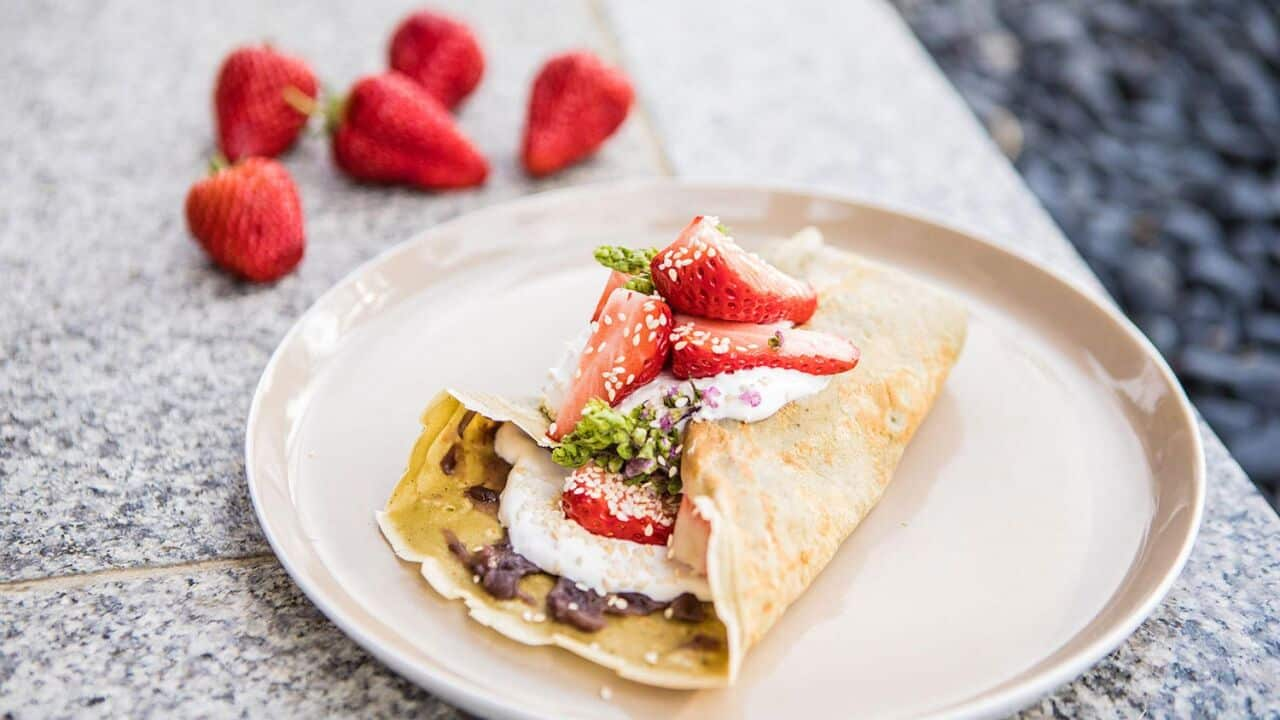Sen Rikyu, the 16th-century tea master credited with perfecting the "way of tea" in Japan, stated that, "Chanoyu (Chado, or the Way of Tea) simply means to heat water, put in tea and drink it".
Sounds pretty straightforward, right? Yes and no—underlying this simple concept is a complex set of rules and principles that have created the highly ritualised and mesmeric practice of tea ceremony in Japan.
"Tea ceremony has been an integral part of Japanese culture for centuries. It's the ceremonial preparation of the powdered green tea, known as matcha," says Justine Schofield, host of Justine's Flavours of Fuji.
"It has a set of practices and etiquette that define it, and set it apart from other cultural ceremonies".
The rules, seven in total, proposed by Sen Rikyu, are: (1) Make a satisfying bowl of tea; (2) Lay the charcoal so that the water boils efficiently; (3) Provide a sense of coolness in the summer and warmth in the winter; (4) Arrange the flowers as though they were in the field; (5) Be ready ahead of time; (6) Be prepared in case it should rain; (7) Act with utmost consideration toward your guests.
When Justine visits Japan's Shizuoka Prefecture, which is responsible for 40% of Japan's green tea production, she tries a private tea ceremony with a local tea master to experience this elegant and thoughtful practice firsthand.
As is tradition, Justine and her host both wear kimono, and sit in seiza (kneeling) style on a tatami floor in the chashitsu (tea room). One of the most important features of a chashitsu is the tokonoma, an alcove in the room showcasing flowers and a hanging scroll. The flowers are seasonal, and always fresh. Both the flowers and the message transcribed on the scroll set a scene of intimacy and connection between the host and guests.
"The host of the ceremony always considers the guest with every movement and gesture, even the placement of the tea utensils is considered from the guest's point of view," says Justine.
The principles that guide the ceremony are designed not just to be fostered within the room, but to be taken beyond tea room: wa - harmony with nature, kei - respect for each other, sei - purity of utensils and mind, and jaku - tranquillity with nature and the mind.
Justine's Japanese-French fusion

Matcha crepes with red bean paste
"The ceremony, which is performed with grace and beauty, is a symbol of peace, harmony and happiness. And is a moment to bond with the guests on a spiritual level."
Guests are served two teas, and a wagashi—a traditional Japanese sweet made predominantly of bean paste and sugar. The sweets are served to balance and complement the astringent taste of the tea, and are also seasonal. In spring, the wagashi may be shaped like a cherry blossom or wrapped in a pickled cherry tree leaf, and in autumn, made from chestnut paste or shaped like an autumn leaf.
Tea ceremony can take up to two hours, with the tea prepared in an iron teapot over charcoal in a sunken hearth. The first tea will be served at around 50°C and is renowned for its sweetness.
"The first tea is herbaceous, sweet. Slightly floral and not typically hot," says Justine.
The second tea, which will be made from ceremonial-grade matcha powder whisked with water until a layer of iridescent green foam covers the liquid, is slightly more bitter and served a little bit warmer.
"After seeing how much labour is involved in making 30 millilitres of tea, you really do appreciate every sip of this divine tea."







